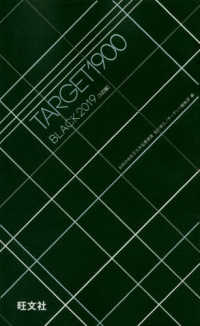Full Description
This book aims to simplify the complex interpretation of neonatal electroencephalography (EEG), focusing on key patterns essential for the prevention and treatment of brain damages. With the physiological immaturity of the central nervous system in neonates, identifying brain conditions can be challenging. However, neonatal EEG, with its excellent temporal resolution, offers a real-time window into the brain functioning, making it an invaluable bedside tool.
To help readers deepen their understanding, the book provides a comprehensive collection of normal and abnormal EEGs samples, systematically categorized by postmenstrual age. Each case is accompanied by detailed observations and unique methods of interpretation, such as identifying abnormalities related to the timing of brain injuries. The book is organized into six sections: Introduction, Normal EEG patterns, Abnormal EEG patterns, Neonatal seizures, aEEG, and Practical application of neonatal EEG in clinical settings.
This book is highly recommended for all neonatologists and pediatric neurologists dedicated to ensuring the intact survival and optimal neurodevelopment for high-risk newborns. It is also a valuable book for pediatricians, neurophysiologists, EEG technicians, residents, and NICU nurses, and other healthcare professionals involved in the care and follow-up of newborns discharged from the NICU.
Contents
Part I Overview.- Chapter 1 Why is it important to record neonatal EEGs?.- Chapter 2 Characteristics of neonatal EEGs.- Chapter 3 Sleep stages and EEG patterns.- Part II Normal EEG in Neonates.- Chapter 4 EEG Patterns in Newborns.- Chapter 5 Developmental Changes in EEG Patterns: Development of Tracé Alternant /Tracé Discontinu.- Chapter 6 Developmental Changes in EEG Patterns: Development of High-Voltage Slow Wave Pattern.- Chapter 7 Developmental Changes in EEG Patterns: Development of Low-Voltage Irregular Patterns.- Chapter 8 Developmental Changes in EEG Patterns: Development of the Mixed Pattern and Differences From the High-Voltage Slow Wave Pattern.- Chapter 9 Developmental Changes in EEG Patterns: EEG in Extremely Preterm Infants.- Chapter 10 Knowledge of Artifacts Necessary for EEG Interpretation.- Part III Abnormal Findings in EEG in Neonates.- Chapter 11 Concept of Abnormal EEG.- Chapter 12 Acute-Stage Abnormalities.- Chapter 13 Chronic-Stage Abnormalities.- Chapter 14 Disorganized Pattern.- Chapter 15 Dysmature Pattern.- Chapter 16 Dysmorphic Pattern.- Part IV EEG in Neonatal Seizures.- Chapter 17 Neonatal Seizures.- Part V Amplitude-integrated EEG.- Chapter 18 Amplitude-integrated Electroencephalogram (aEEG): General.- Chapter 19 Acute-Stage Abnormalities on aEEG.- Chapter 20 Neonatal Seizures on aEEG.- Part VI Application of EEG in Neonates.- Chapter 21 How to Record a Neonatal EEG.- Chapter 22 How to Write a Neonatal EEG Report.- Chapter 23 Clinical Application of EEG in the Neonatal Period.- Appendix.








